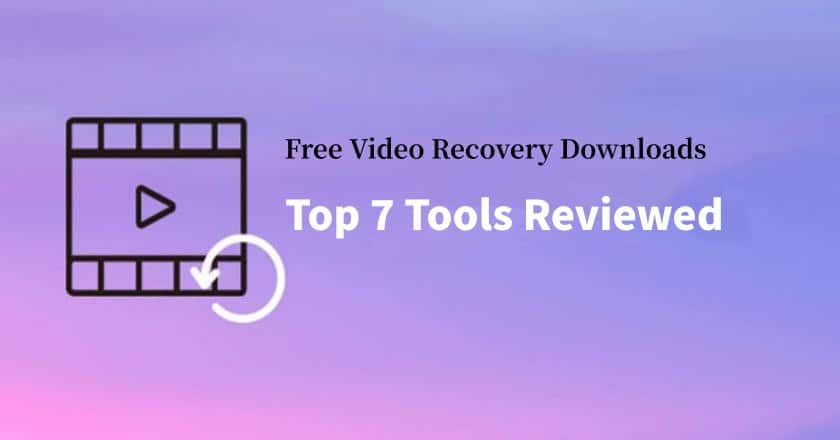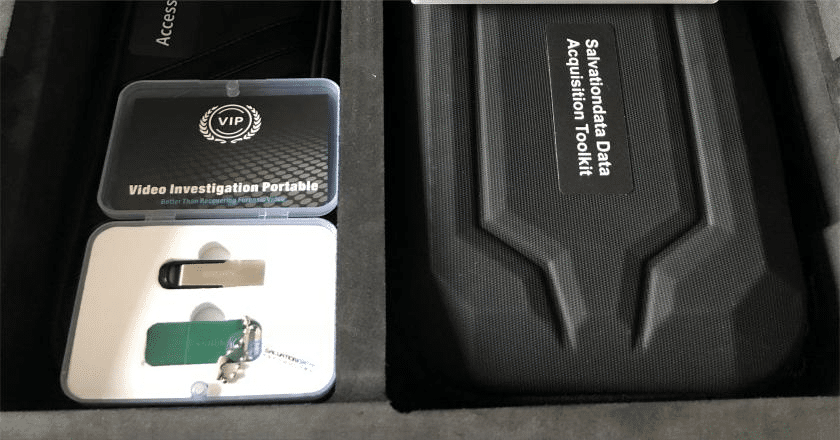In a world where digital material is king, losing video clips, whether they are personal or work-related, can feel like losing a piece of history. But in the digital world, mistakes like video file errors, tech problems, and program bugs are widespread. Because of this, having reliable tools for recovering videos is not just a nice-to-have, it’s a must.This article will talk about the top 7 free video recovery downloads that claim to be able to save your important video files from being lost forever. There are things that could go wrong with your digital life, but we want to give you the information and tools to make them less bad. No matter if you’re a regular user or an expert, the options we talk about here are meant to meet your needs quickly and easily.
Free Video Recovery Downloads: Top 7 Tools Reviewed

-
Content
- Understanding Video File Loss
- Criteria for Selecting Video Recovery Software
- Detailed Review of the Top 7 Free Video Recovery Tools
- Step-by-Step Guide: How to Recover Lost Videos
- Tips for Preventing Video File Loss in the Future
- Conclusion
-
Content
- Understanding Video File Loss
- Criteria for Selecting Video Recovery Software
- Detailed Review of the Top 7 Free Video Recovery Tools
- Step-by-Step Guide: How to Recover Lost Videos
- Tips for Preventing Video File Loss in the Future
- Conclusion
Understanding Video File Loss
1. Common Causes of Video File Loss
- Video files are especially likely to lose data in a number of ways.
- One of the most common reasons is accidental loss, which happens when people reset their storage devices or delete important video files without first making backups.
- Corruption makes things even more difficult. It usually happens when a system crashes or is attacked by malware, which can make video files unusable.
- Data loss can also be caused by mistakes in editing or physical damage to storage media. For this reason, users need trusted data recovery options.
2. Challenges in Video File Recovery
- Recovery of deleted video files is hard for a number of reasons, mostly because the files are very large and the data structures are very complicated.
- When working with broken video files, where pieces of the files are spread out in different places on the recording medium, the process gets even more complicated.
- Because of this, free video recovery downloadtools need to do more thorough checks and carefully put back together file parts to make sure they restore correctly. Adding to the difficulty is the need to keep these pieces from being overwritten during the recovery process, which could cause data loss that can’t be recovered.
- Users can better handle the complicated process of recovering lost video files and pick the tools that give them the best chance of getting their data back if they understand these factors.
Criteria for Selecting Video Recovery Software
1. Compatibility with Multiple File Formats
- When looking for video recovery software, the first thing you should think about is how well it works with different types of video files.
- Popular file types like MP4, AVI, and MOV must be supported by good recovery tools so they can meet the needs of a wide range of users.
2. Ease of Use and Intuitive User Interface
- It’s also very important that video restore software is easy to use.
- A simple tool that walks users through the recovery process makes the job easier and makes it possible for people with different levels of technical knowledge to do it.
3. High Recovery Success Rate and Performance
- How useful free video recovery download software is can be judged by how well it works and how often it recovers files.
- Tools that work well show that they can get back movies quickly and with little data loss.
4. Safety and Reliability
- Lastly, it’s very important that the program is safe and reliable. When you use good video recovery tools, they should make sure that the original files don’t get damaged during the recovery process.
- This includes including features that stop data from being overwritten and safe, read-only tools that keep the data’s security while it’s being recovered.
Detailed Review of the Top 7 Free Video Recovery Tools
1.Recuva
PROS
- Recuva is a free video recovery tool that stands out because it is easy to use and works with many file types, including those that are frequently found in video files.
- With just a few easy steps, its simple layout lets users quickly get back lost movies. Some of its pros are that it can do deep scans and you can safely delete files to stop others from recovering them. Contact to get a Free Trial now!
CONS
- On the other hand, include restricted support for files that are very broken and sometimes slower healing speeds for big files. Users can choose the drive, search for lost movies, and safely get them back by following a simple three-step process.
2. PhotoRec
PROS
- PhotoRec is an open-source, free video recovery downloadtool that does a great job of getting videos back from drives that have been badly damaged or deleted.
- Its best feature is its deep screening, which can bring back video proof from media that has been badly damaged.
CONS
- It doesn’t have a visible user interface, which can be hard for people who aren’t very tech-savvy, but its powerful repair tools make up for that. Users can trust detailed command-line directions to help them through the restore process.
3. Disk Drill (Free Version)
PROS
- A lot of great tools are built into Disk Drill that are specifically made for video analysis and recovery.
- The free version lets users see a sample of the files that can be recovered, which helps them find important movies before they start the recovery process.
- It’s very easy to use, with a clean design that works better than other tools.
- Click here to get a Forensic Download now!
CONS
- But because the free version only recovers a certain amount of data, you may need to pay for a more advanced version if you need to retrieve a lot of data.
4. EaseUS Data Recovery Wizard (Free Version)
PROS
- People love this tool because it can easily get back deleted video files and is very good at doing so.
- The free version of EaseUS Data Recovery Wizard works well with many file types and has a high success rate for recovering data.
CONS
- It is easy to follow the steps, but there are some restrictions, such as a free data recovery limit.
5. Video Investigation Portable 2.0 (Free Trial Version)
PROS
- Video Investigation Portable 2.0 is geared towards professionals in cyber forensic companies, offering advanced tools for detailed video analysis and recovery.
- Its key advantages include specialized functions for forensic video analysis and the ability to handle complex recovery scenarios.
CONS
- Comparatively, it is less known but provides exceptional depth in recovery options, especially in digital forensics.
6. Wondershare Recoverit (Free Version)
PROS
- Recoverit is famous for having an easy-to-use layout and recovering files quickly.
- It works with many different types of video files and is especially good at getting back lost movies.
- The tool makes healing easier by being easy to set up.
CONS
- But the free version may not have as many features as the paid version.
7. MiniTool Power Data Recovery (Free Version)
PROS
- MiniTool focuses on free video recoverydownload and stands out by having features that make it a good choice for video forensic tool.
- It is easy to use and has strong recovery features.
CONS
- Like other free tools, its free version limits the amount of data that can be recovered.
Each of these tools is useful for different types of healing because it has its own set of features and functions. Whether you need to restore videos for personal or business use, choosing the right tool relies on things like file format support, how easy it is to use, and how much data needs to be recovered.
Step-by-Step Guide: How to Recover Lost Videos
1. General Recovery Steps
Getting back lost movies is pretty much the same process for all video recovery tools. Users must first install the recovery tool and choose the drive or section where the lost video files were originally kept. Next, start a scan to look for files that can be recovered. Depending on the software, users may be able to pick between a quick scan for recently removed files and a deep scan for data that is seriously damaged or broken up. After the check is done, look at the recovered files, pick out the movies you want to restore, and save them somewhere else so that you don’t lose any data during the recovery process.
2. Using VIP 2.0 from SalvationDATA
SalvationDATA‘s VIP 2.0 is made for professional-level forensic video analysis, but it’s also easy enough to use for everyday video recovery jobs. To use VIP 2.0 to get back lost movies, first run the software and choose the drive you want to work on. If you have badly damaged files, choose a deep check. VIP 2.0 is great at fixing broken videos and making sure they are fully recovered even in tricky situations. Once the check is done, the software will show you a list of all the recovered video files along with a full sample. Pick out the files you want to save and click “Recover” to do so safely on a different drive. The advanced algorithms in VIP 2.0 make sure that recovering lost video files works quickly and reliably. This makes it a great choice for both personal and business use.
Tips for Preventing Video File Loss in the Future
1. Best Practices for Backing Up Video Files
The most effective way to avoid the stress of needing a free video recovery download is to implement regular backups of your video files. Establishing a routine for backing up important videos to multiple locations is crucial. Utilize both cloud storage and external hard drives to ensure redundancy. Cloud services provide easy access and secure storage, while physical backups on external drives offer a quick recovery option without relying on an internet connection. For added security, consider using cyber forensic companies to audit and manage your backup strategy, ensuring that your valuable data remains intact.
2. Tips on Maintaining Storage Devices to Avoid Corruption
To protect yourself even more against losing video files, it’s important to keep your recording devices in good health. Use monitoring tools to check the health of hard drives on a regular basis and repair them before they fail. Avoid filling storage devices to maximum capacity, as this can lead to fragmentation and increase the risk of recover deleted videos due to corruption. Additionally, keep your devices clean from dust and moisture to prevent physical damage. For professionals involved in video forensics or forensic video analysis, it’s critical to ensure that storage devices used for storing sensitive video evidence are handled with extra care and regularly maintained to avoid data loss.
Conclusion
When you lose video files today, it can be stressful and cost a lot of money. You can lower this risk, though, if you use the right tools and follow the right steps. Throughout this guide, we’ve explored the top free video recovery download options, each offering unique features tailored to different recovery needs. From versatile tools like Recuva to specialized solutions such as VIP 2.0, selecting the right software is crucial for effective video recovery and to recover deleted video files efficiently.
Final tips: Regularly back up your videos to multiple locations, including cloud and physical drives, to ensure redundancy. Maintain your storage devices to prevent corruption and data loss. By combining proactive measures with reliable recovery software, you can protect your valuable video content from unexpected loss. Whether you are a casual user or a professional in digital forensics, these strategies will help safeguard your data and reduce the need for recovery in the future.




